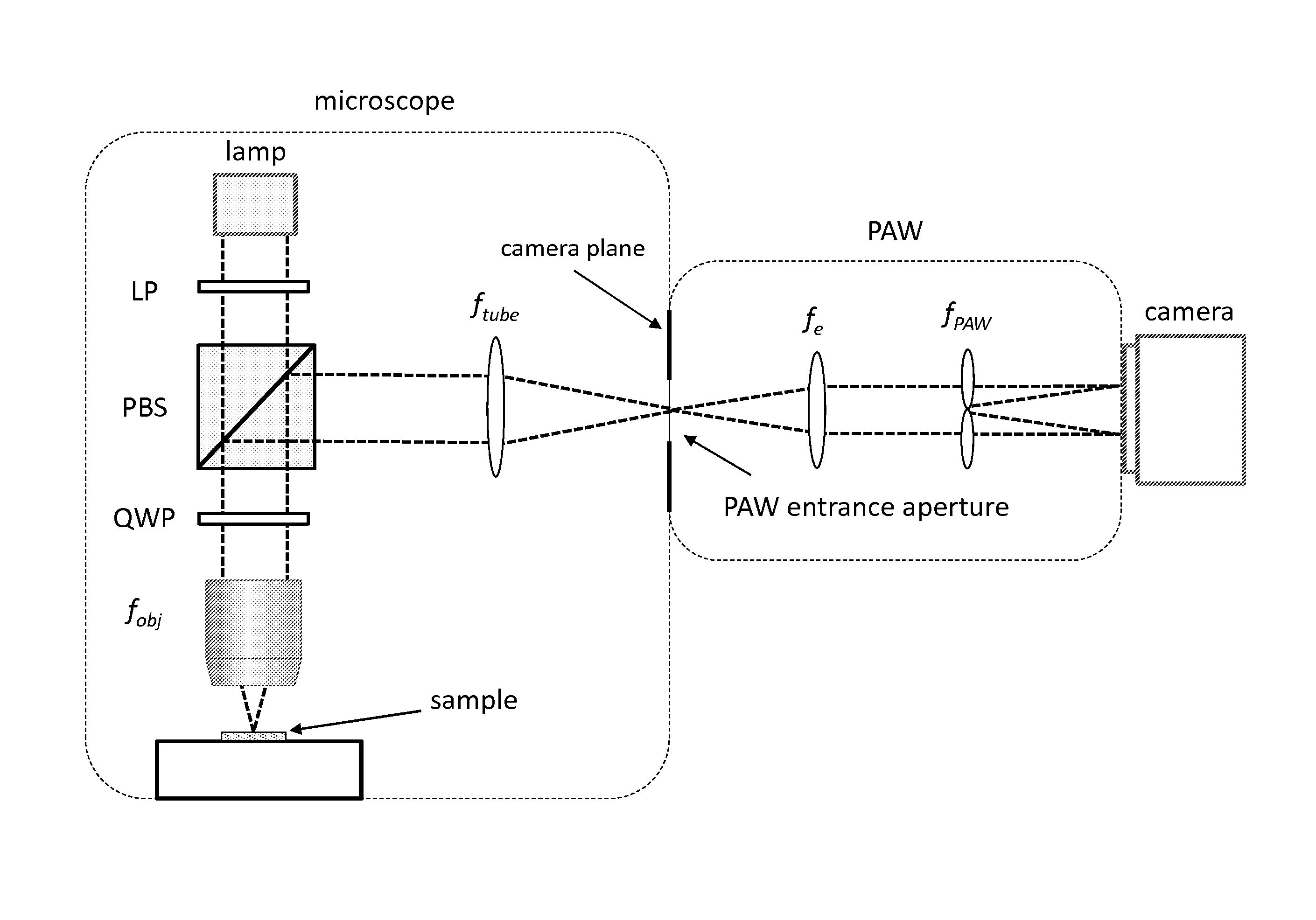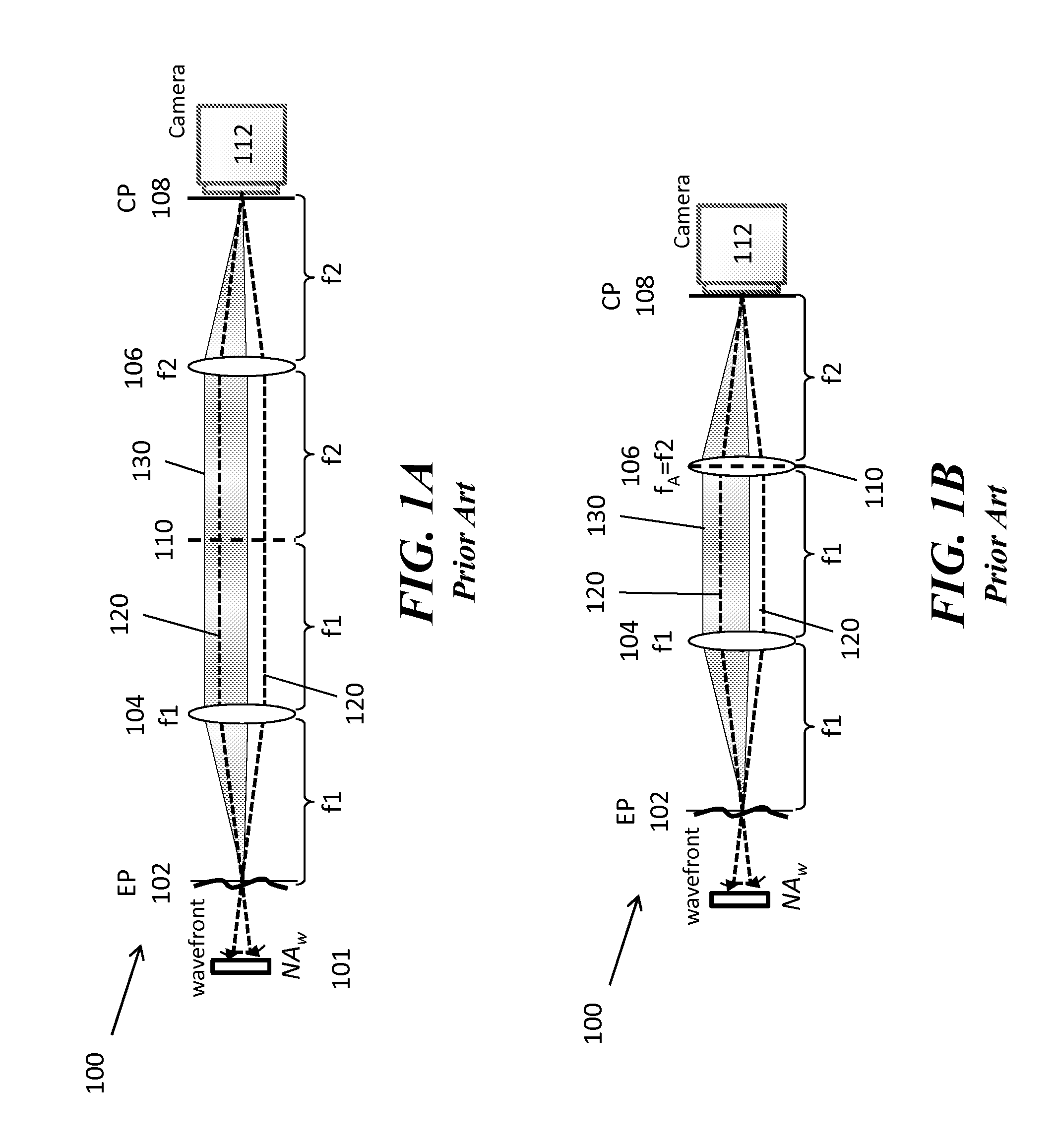Partitioned aperture wavefront imaging method and system
a partitioned aperture wavefront and imaging system technology, applied in the field of partitioned aperture wavefront imaging system and a, can solve the problems of inability to retrieve absolute wavefront phase from a single pc or dic image, less straightforward phase measurement, and inability to provide quantitative images of wavefront phase, etc., to achieve improved spatial resolution, simple optical design, and higher quality optical lenses
- Summary
- Abstract
- Description
- Claims
- Application Information
AI Technical Summary
Benefits of technology
Problems solved by technology
Method used
Image
Examples
Embodiment Construction
[0042]It should be understood that this invention is not limited to the particular embodiments, methodologies, or protocols, described herein and as such can vary from the illustrative embodiments provided. The terminology used herein is for the purpose of describing the particular embodiments only, and is not intended to limit the scope of the present invention, which is defined solely by the claims.
[0043]As used herein and in the claims, the singular forms include the plural and vice versa unless the context clearly indicates otherwise. Other than in the operating examples, or where otherwise indicated, all numbers expressing quantities used herein should be understood as modified in all instances by the term “about.”
[0044]All publications identified are expressly incorporated herein by reference for the purpose of describing and disclosing, for example, the methodologies described in such publications that might be used in connection with the present invention. These publications...
PUM
 Login to View More
Login to View More Abstract
Description
Claims
Application Information
 Login to View More
Login to View More - R&D
- Intellectual Property
- Life Sciences
- Materials
- Tech Scout
- Unparalleled Data Quality
- Higher Quality Content
- 60% Fewer Hallucinations
Browse by: Latest US Patents, China's latest patents, Technical Efficacy Thesaurus, Application Domain, Technology Topic, Popular Technical Reports.
© 2025 PatSnap. All rights reserved.Legal|Privacy policy|Modern Slavery Act Transparency Statement|Sitemap|About US| Contact US: help@patsnap.com



